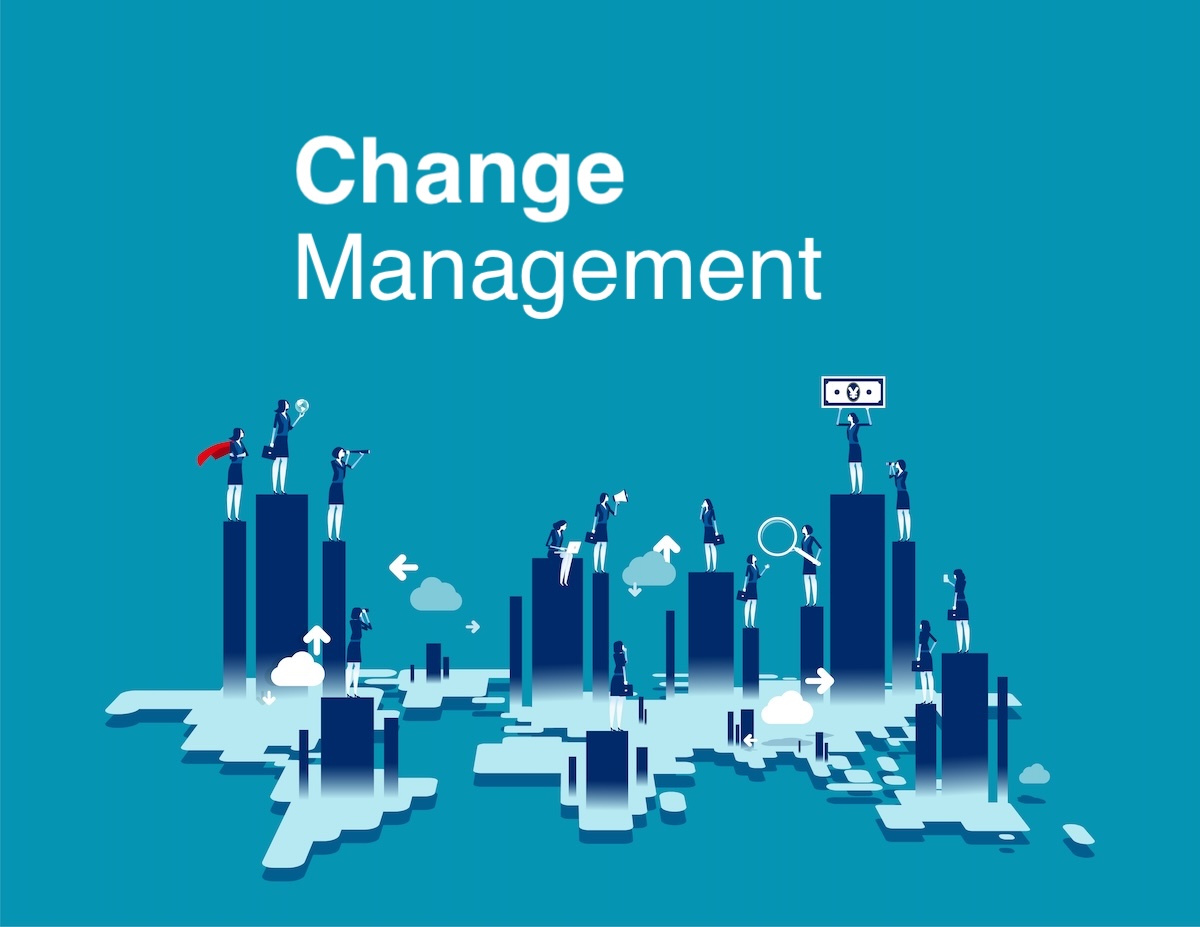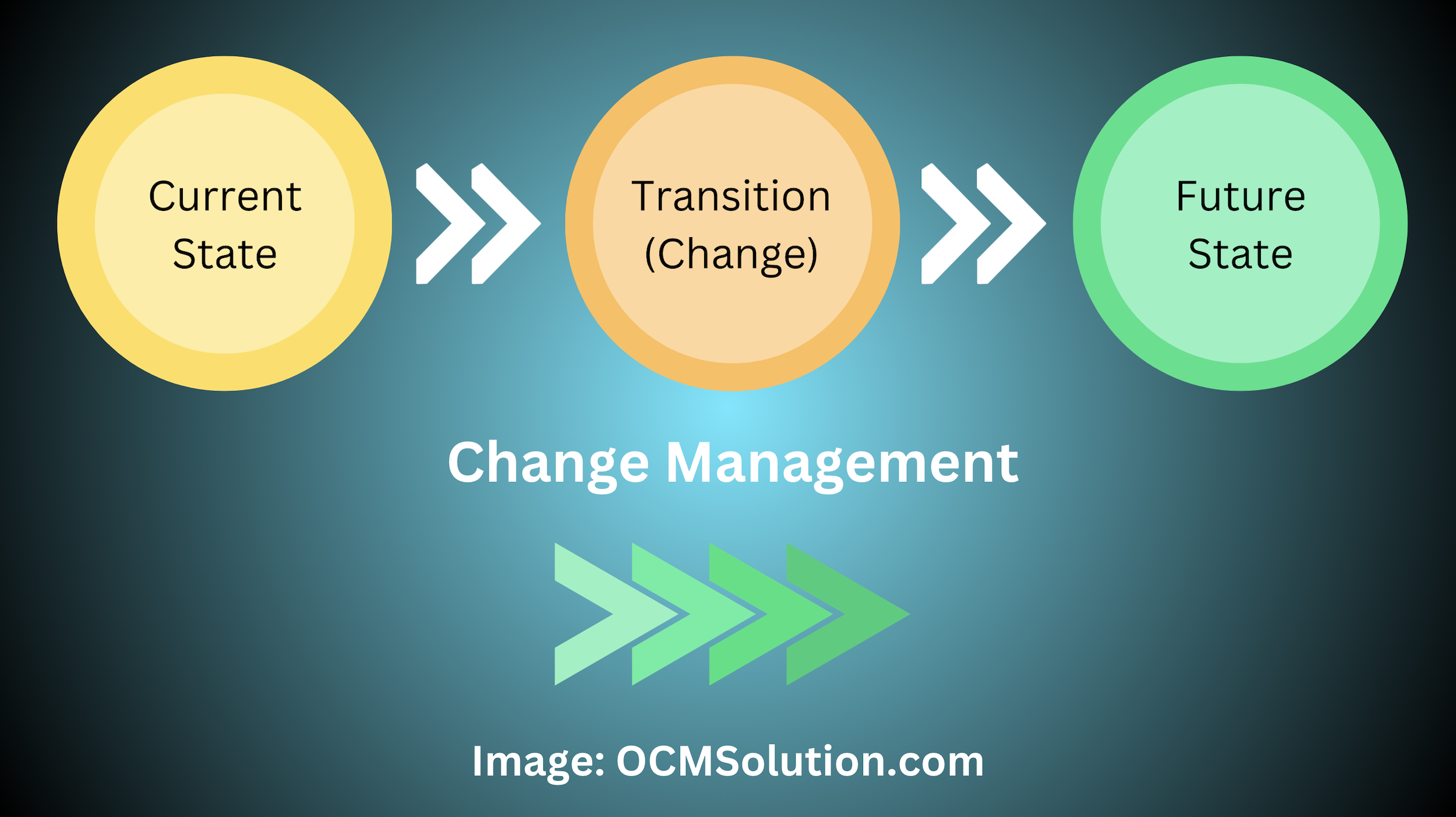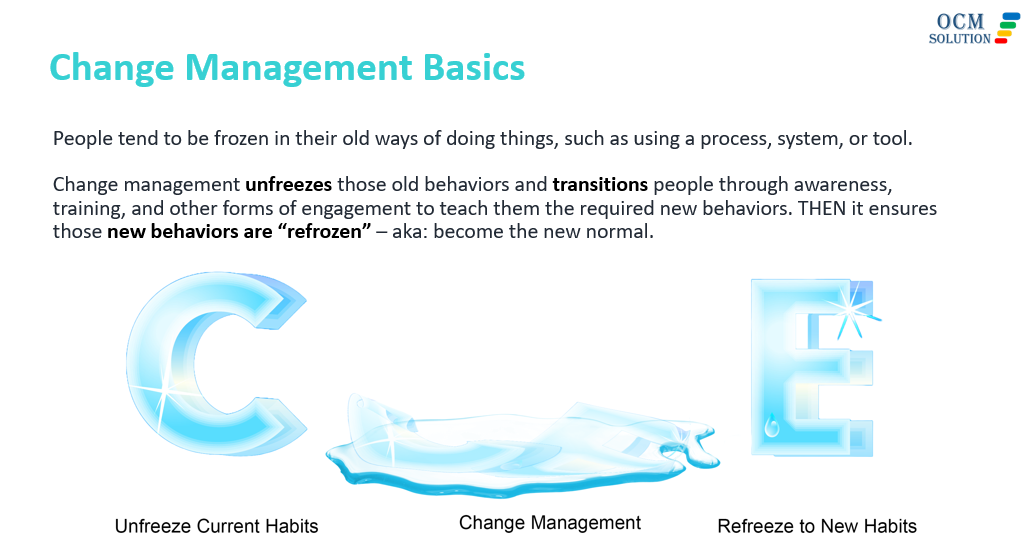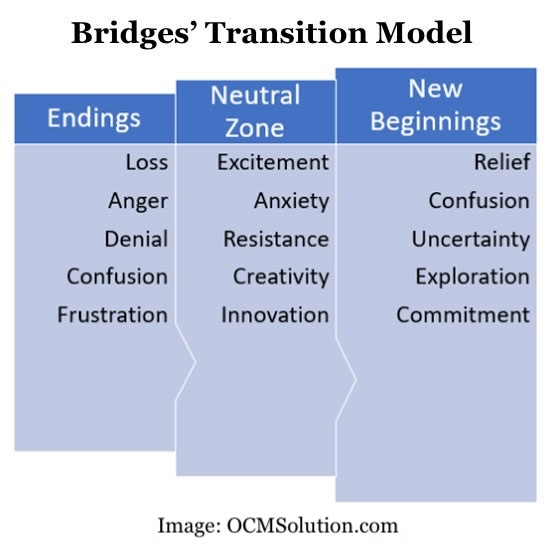Thriving in the New Normal: The Imperative for Business Adaptation
Is your business stuck in a change quagmire? Sinking under the weight of new regulations, evolving customer needs, and the relentless march of technology? Unlike the dinosaurs of old, there’s no need for extinction.
This article equips you with the secret weapon of thriving businesses: change agility. Many have explored the definition of change management, but we’ll go beyond the traditional view. We’ll take inspiration from the organizational change definition by Kotter, which emphasizes creating a sense of urgency and building a strong leadership team. We’ll unveil how to transform change from a disorienting swamp into a springboard for growth.

Get ready to ditch the outdated survival of the fittest mentality and embrace a new paradigm: the adaptation imperative. While the organizational change definition by Kotter emphasizes urgency and strong leadership, we’ll explore a more holistic approach to navigating change and dive into innovative strategies to empower your team, navigate the ever-shifting business landscape, and ultimately, emerge triumphant from the change vortex. So, buckle up, and let’s chart a course for success in the dynamic ocean of business!
Story Highlights
|
Beyond the Comfort Zone: Why Businesses Embrace or Submit to Change
Organizations change for various reasons, both proactive and reactive. They might want to improve operations by innovating or adding new products. Alternatively, they might need to adapt to external circumstances like market fluctuations or cost pressures.
Top Models to Guide Your Organizational Transformation
Several change management models exist, each offering a unique perspective on the process. Some models, like Kotter’s 8-Step Change Model, emphasize creating a sense of urgency and building a strong leadership coalition. Others, like Prosci’s ADKAR Model, focus on ensuring employees are aware of the need for change, desire to support it, and have the knowledge and ability to adopt the new practices.
Regardless of the specific approach, the ultimate goal of change management is the same: to enable a smooth transition for the organization and its people. By providing communication, training, and support, change management helps employees adapt to new ways of working and ultimately achieve the desired outcomes of the change initiative.
From Plans to People: Why Successful Change Needs Both Management Styles
While project management focuses on planning and executing the technical aspects of a change, change management deals with the human side. Project management ensures the change happens as planned, while change management ensures people are prepared and supportive of the change. Both work together for a successful organizational transformation.
Embrace the Inevitable: Mastering Change Management for Business Agility
The success of any change initiative hinges on the people affected by it. Change management focuses on guiding employees through the transition, addressing their concerns, and ensuring they adopt the new ways of working.
Change is inevitable in today’s dynamic business environment. By effectively managing change, organizations can minimize disruption, maximize employee buy-in, and achieve the desired outcomes from any transition. This ensures they remain adaptable and thrive in the long run.
Do you have any questions or feedback on why the definition of change management? We’d love to hear from you. Reach out here.
The Definition of Change Management. Everything You Need to Know
How do you define change management? Change management is a set of strategies and procedures used to manage an organizational change and guide people through the necessary transition to achieve the desired result.
What is Organizational Change?
The world “change” is somewhat nebulous. It can mean different things to different people. But when it comes to understanding the concept of change management, it all begins with something changing in the way an organization operates.
This can mean a change in:
- Personnel
- Leadership
- Processes
- Tools
- Procedures
- Culture
- Location
- Resources

Define Change Management
Organizational change can be a small change, such as replacing a manual workflow in software with an automated one. It can also mean a large change, which could be a merger of two companies.
The people being impacted by the change, which will typically be the employees working for the organization, are the key focus of the organizational change management definition.
It’s All About the People
When asked to define organizational change management, the first place to start is the people being impacted by the change.
Change management is about ensuring those people are successfully guided through the steps to move from the old process or procedures to the new ones needed for the change to be successful.
See Also: Change Management Consultant | All You Need to Know
Why Do Things Change? | Organizational Change Definition
Why do organizations change? Changes can come from the desire to grow and innovate. They can also come from the need to adjust and adapt.
Want to Change
One of the biggest reasons that organizations change is because they are looking to improve the way things are done.
In this case, an organizational change definition could include innovating to stay a “step ahead of the competition” or wanting to create a better customer experience to positively impact sales.
When asked to define organizational change when it comes to improvements, some of the activities may be:
- Adding new products or services
- Increasing the size of the staff
- Adopting new technology
- Moving to a larger location
- Optimizing workflows through automation
Have to Change
Another reason that organizations change is because they have to. They may be forced to change to adapt to new market conditions or due to the need to reduce costs.
In this case, the organizational change definition is going to look slightly different. It may mean a faster change that doesn’t afford the same time for planning. It may also mean a less welcome change, but one that is necessary to survive.
Some examples of ways to define the organizational change that is due to outside circumstances include:
- Downsizing office to lower overhead
- Adjusting to a remote work situation due to stay-at-home government orders
- Revamping sales and operations to adapt to changed customer behaviors
- Transitioning to a new software due to a vendor going out of business
Define Organizational Change
When asked for the short definition of change, we define the organizational change in the following way.
Organizational Change Definition: An event whereby an organization transitions from one state of operations, tools, or processes to another. It involves a change from a “current state” to a “future state” for the organization and its employees.
The Concept of Change Management
Before people even knew there was a way to define organization change and well before the concept of change management entered into the business lexicon, organizations have undergone a change.
For example, businesses in the early 1900s adapted to the automobile and telephone as they became available, both new technologies of the time that allowed innovation. Those adoptions required a change in the way companies did things.
While it may not have been specifically defined as “organizational change,” it was a change all the same.
The Concept of Change Management is Born: The Key to Change is People
One of the first organizational change management definitions from a well-known change methodology can be traced back to 1947. That’s when psychologist Kurt Lewin published his change theory, which was one of the first focused on defining the concept of change management and the transition people have to make to change successfully.
The importance of the Lewin change model was that it highlighted people and the transition they have to make during an organizational change, and helped define change management in the process.

Now, there was a process that needed to be adopted to ensure an organizational change could happen. A process that included guiding people from the old way of doing things to the new way, while taking their behaviors, habits, and feelings into consideration.
That process = The change management definition.
Change Models & Methodologies
Besides the organizational change management definition by Lewin, there are other leading change management models that also give a little different spin on how to define change management.
Each includes the main concept of change management, which is that if an organization wants to get through a change successfully, the people have to change successfully first.
This means a change in their habits, behaviors, processes, and general way of doing things, which is not always easy and often meets with resistance.
That’s why multiple change management models and methodologies have been developed over the years, each with their own way of defining change management.
We’ll go through a brief overview of four of the most popular models to help further define organizational change management. We’ll cover the change management definition Kotter, Prosci, Lewin, and Bridges each describe in a change model.
Don’t Miss: Do You Really Need a Change Mgt Certification? Is it Worth it?
How Change Models Define Change Management?
You can’t fully define change management without discussing some of the popular change models that are used for change management.
A change model provides a framework to help organizations understand the change management definition as well as create a strategy for change management. Most change management professionals will follow the concept of change management given in one or more change models when guiding an organizational change project.
To define change management from several perspectives, we’ll go through the change management definition Kotter, Prosci, Lewin, and Bridges all provided.
Change Management Definition Kotter
To better define change management, John Kotter identified eight factors that caused change projects to fail. He then created the Kotter 8-Step change model to address those failure factors and keep organizational change projects on track.
The organizational change management definition Kotter put forth is different than many others in that it takes a more top-down approach, focusing on the change project momentum. Others take a bottom-up approach, focusing on the people going through the transition the most.
Kotter’s change management definition included these eight steps:
- Create a sense of urgency
- Build a guiding coalition
- Form a strategic vision and initiatives
- Enlist a volunteer army
- Enable action by removing barriers
- Generate short-term wins
- Sustain acceleration
- Institute change
Change Management Definition Prosci
The ADKAR change model developed by Prosci, uses the acronym ADKAR as a change management definition for the stages that employees need to go through for an organizational change to be effective.
These are:
- A: Awareness of the need to change
- D: Desire to support the change
- K: Knowledge of how to successfully change
- A: Ability to adopt the new skills/behaviors for the change
- R: Reinforcement of the change, so it sticks
The other part of the Prosci organizational change definition includes three phases that a change project goes through.
- Preparing for change
- Managing change
- Reinforcing change

Kurt Lewin Change Management Definition
Change Management Definition Lewin
Kurt Lewin was one of the first to define change management, and he did so in a way that describes the changes in behavior that need to take place for change to happen.
The Kurt Lewin change model illustrates the need to unfreeze the current state behaviors and habits, teach the new behaviors, and then freeze the new behaviors so they’ll become the new “way we do things.”
These three stages of the change management definition are described as:
- Unfreeze
- Change
- Freeze
Change Management Definition Bridges
The organizational change definition put forth by the William Bridges change model discusses the emotions that people go through as they transition through the phases of change.
Just like Prosci and Lewin, the Bridges model has three stages that define the change management process.

The phases in the Bridges model are defined as:
- Endings
- Neutral Zone
- New Beginnings
How does Bridges’ change management definition differ from the others? It’s much more focused on the emotions people feel when in each stage of change.
Related: John Kotter’s 8-Step Change Model
Define Change Management & Project Management
When people are defining change management, they often wonder, “What is the difference between project management and change management?”
The two are interconnected in that a change project needs to also have a project management component to it—to manage the processes, strategies, and planning of a change project.
While change management is defined as managing the “people” part of the change, people can’t change without change project planning.
Project Management Definition
The Project Management Institute defines project management as “The application of knowledge, skills, tools, and techniques to project activities to meet the project requirements.”
Project management is an important part of change management.
The key difference is that project management may or may not involve a project that impacts people and the way they do things. Where change management always includes a project that impacts people and the way they do things.
When looking at change management vs project management, it helps to look at the various “buckets” of activities in the following way.
Change Management Definition: People Focused Part of Change
- Identifying stakeholders (those impacted by a change)
- Estimating readiness for change
- Gauging change impact on stakeholders
- Coaching leaders
- Developing a change champions network
- Communicating with stakeholders
- Training users
- Managing resistance to change
Project Management Definition: Process Focused Part of Change
- Defining change project parameters
- Allocating budget and resources
- Creating a change management strategy and plan
- Implementing the steps needed for the organizational change
- Monitoring and tracking change project metrics
Contact us if you have any questions or feedback about this guide or need more information on the change management definition by authors.
Project Management & Organizational Change Management Definition | How They Work Together
When looking at how project management and change management work together, let’s look again at the change management definition, which is: A set of strategies and procedures used to manage an organizational change and guide people through the necessary transition to achieve the desired result.
Project management would be the procedures needed to manage the organizational change when it comes to allocating resources, planning the steps of the project, and basically proving the framework for the project to happen successfully.
You can consider project management as one of the key pieces of change management.
Popular Article: What Does a Change Manager Really Do?
Conclusion: Defining the Concept of Change Management
While you can define organizational change in a variety of ways that are specific to a particular organization (merger, technology innovation, cost-cutting measures), change management has the same objective.
The change management definition revolves around ensuring the people going through the change do so successfully, which includes mitigation resistance, and implementing communications, training, and other support resources.
There are several variations on how exactly to define change management when you look at the different change models; however, all have the same end goal.
That goal is to enable an organization to make a change by guiding the people being impacted through the steps needed to adopt the new behaviors necessary for a positive outcome.
Note: Content on OCM Solution's ocmsolution.com website is protected by copyright. Should you have any questions or comments regarding this OCM Solution page, please reach out to Ogbe Airiodion (Change Management Lead) or the OCM Solutions Team today. OCM Solution was previously known as Airiodion Global Services (AGS).
Image: stock.adobe.com





